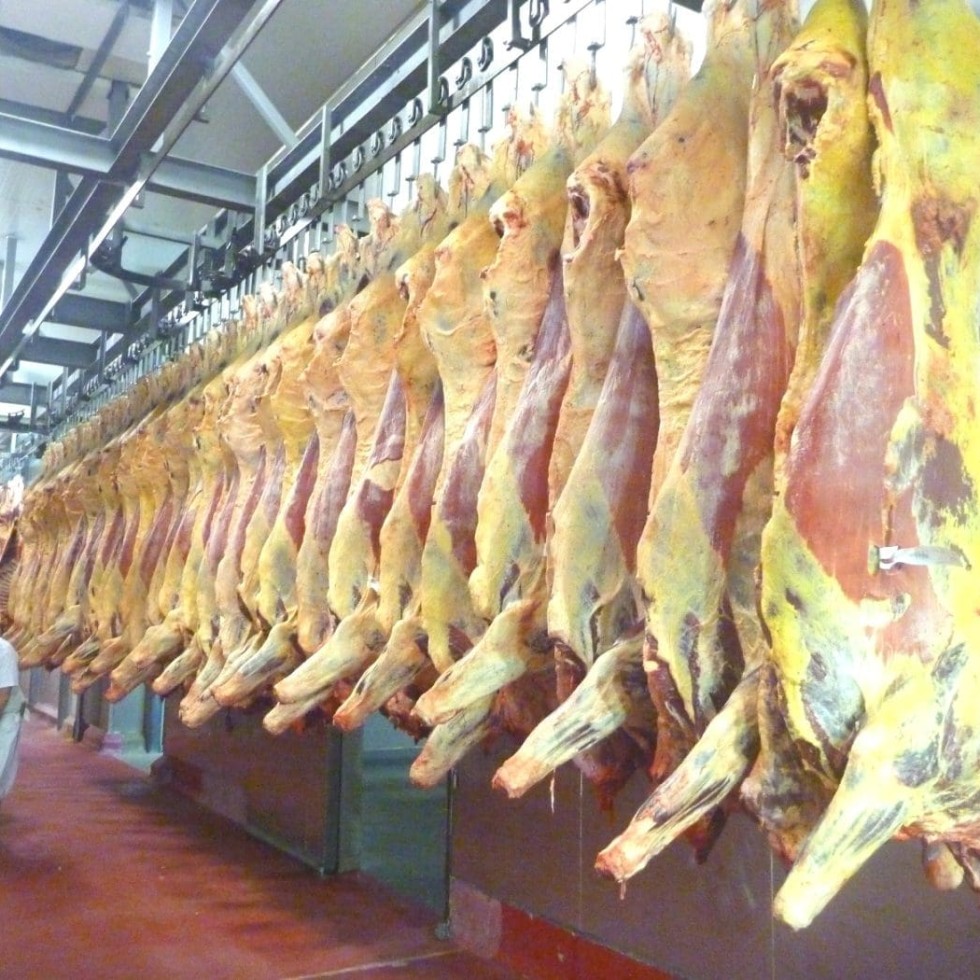 To better understand the presence of butt shape as a yield indicator in today’s AusMeat language, it’s worthwhile exploring the measurement’s origins, and the industry politics surrounding its introduction 25 years ago.
To better understand the presence of butt shape as a yield indicator in today’s AusMeat language, it’s worthwhile exploring the measurement’s origins, and the industry politics surrounding its introduction 25 years ago.
Beef Central yesterday published an introductory article outlining recently-revived concerns about the use of butt shape as a pricing tool in some processor grids, and possible reasons for apparent irregularity in butt shape assessment during grading (click here to view).
Later today, a third report will be filed, discussing prospects for a broader review of grading/carcase assessment systems, which some see as long overdue.
The term butt shape probably had its origins in research conducted by the NSW Meat Authority in the mid-1980s, and it was promoted widely as a yield predictor during that era by the NSW Department of Agriculture.
When AusMeat came into existence in 1987, leading to the advent of killfloor and later chiller assessment as the standard form of carcase appraisal, the butt shape silhouette was immediately adopted as part of the industry language.
Stakeholders who were close to the formation and implementation of AusMeat in that era told Beef Central the then chief executive, John Hall, was under considerable pressure to deliver a working industry language within what was seen as an unrealistically short timeframe.
The suggestion was that butt shape was included as a yield indicator without any great degree of scientific scrutiny, but simply because ‘it was out there, and it filled a hole.’
Over the years NSW Department of Ag’s yield assessment focus has moved from a silhouette-based assessment to an overall muscle score based on assessment gauged from different directions. Other yield calculators like VIAscan were developed, but uptake was extremely limited.
While the AusMeat language’s butt shape is still based solely on a ‘profile’ or silhouette, devoid of fat, some stakeholders suggest AusMeat graders now drift between one and two dimensions in the assessment process.
Around the time of the industry’s first National Livestock Feedback Trial in 1988, questions started to be asked about the relevance and accuracy of butt profile as a measurement tool.
An early catalyst came when pen of Belmont Red cattle from Central Queensland won the overall competition, and scored at the top end of results in the full bone-out performed on all entries, while receiving a string of D-butt scores from AusMeat-accredited assessors on the kill floor.
The situation worsened when, for whatever reason, mandatory specifications set for the Korean export market adopted a maximum C-butt shape requirement from the AusMeat language on Australian carcases being sold into the Korean frozen quarter-beef export trade at that time.
While AusMeat suggests that requirement was set by the Korean authorities themselves, many believe it was ‘suggested and initiated’ by the Australian negotiators, as part of an attempt by AusMeat to add ‘legitimacy’ to the butt shape measurement.
Perceived interferences in commercial transactions like this were a major reason why many sectors of industry fell-out with AusMeat in its early days. Senior managers in AusMeat in that era privately said that they wished that butt shape had never found its way into the language, because it was increasingly seen as ‘undefendable’ from a performance standpoint.
Before long, however, butt shape started to appear in commercial processor grids for markets other than Korea. To this day, and despite the arrival of more accurate chiller assessment yield indicators like fat depth and eye muscle area, butt profile remains a voluntary AusMeat language descriptor for use by processors.
Opposition to butt shape hit a crescendo around 1990, when the measurement was widely condemned by disparate groups ranging from the Cattlemens Union and United Graziers Association to the Queensland National Party, as an unreliable and inappropriate yield indicator, especially when used in abattoir pricing schedules.
On the domestic market, in the days when butchers bought most of their beef in carcase form, butt shape came into vogue among some butchers, who would specify ‘C+ butt or better’ when ordering supplies, for example in an attempt to protect their yield performance. Today however, carcase beef has all but disappeared from the trade, but penalties still exist in some domestic grids for butt shape.
Butt shape was also made a mandatory component of the carcase specifications for the National Carcase Branding Scheme (Gold, Purple and Bronze) for the domestic market. However in 1992 the AusMeat Board determined that butt shape was not a reliable indicator of saleable meat yield and effectively removed the assessment from the carcase specification requirements for all of the colour branding schemes.
At the time the AusMeat board acknowledged that butt shape was still being used in beef carcase specifications under agreement between buyer and seller (both export and domestic) and so determined if being used as part of any specification, its assessment should continue to be scored against the silhouettes and would remain within the language where it is used in some company specification, customer requirement or carcase price determinations.
The mandatory requirement on butt profile for Korea disappeared quickly following that market’s liberalisation in 2001, when frozen quarters were replaced by boxed beef.
Butt profile was also adopted for use into Japan, in the days of the fullset carcase trade, now long-gone. The only market-mandated butt profile requirement today is for the EU market, where A-C butts only qualify. Again, Beef Central was told that this requirement was proposed by the Australian negotiators during the market establishment process – not by their EU equivalents.



HAVE YOUR SAY